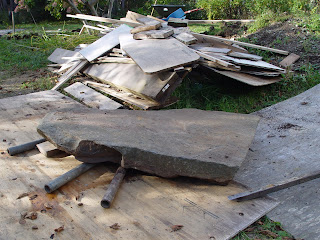
Today has been a day when I have been made aware of blessings in my life. It started most significantly this morning when I attended a mental health conference here in Halifax. My intention in going was to hear
Dr. Stan Kutcher speak about mental health and illness in young people. I went because I met Dr. Kutcher just over ten years ago when he has the lead doctor on our son’s medical treatment team at 6 Lane, a closed ward at the Abbie Lane Memorial Hospital, a hospital for treatment of mental illnesses. I remembered Stan’s attention and intelligence, his way of
talking about mental disorders and our son’s condition, and his acceptance of Lorraine’s and my presence in Jon Eben’s hospital life and on/in the ward far beyond the boundaries of visiting hours. He was not the only person who was instrumental in Jon Eben’s recovery, but his role was key to the process, and we have always considered ourselves blessed that our postal code led to Stan Kutcher becoming Jon Eben’s doctor.
Stan’s talk was great, just like the other talks I heard him give many years ago. He has a way of making sense of the mysteries and helping us who listen find our way through the incredible turmoils and complexities of mental health and mental illnesses by his clear, informed, and down-to-earth approach. So I was blessed today by hearing his talk and by his reminders of what we can, and need to, do in order to try to make the environment we live in a better place for dealing with mental disorders and helping people who suffer from them; and I was blessed by the memory of our son’s illness, his recovery, and his present state as a loving and caring husband and father.
I have puzzled over the words “bless” and “blessed” and “blessing”. I want to avoid religious connotations, because I don’t especially care for the idea of some person or deity bestowing, like a kindly parent, some benefit or beneficence. To me the blessing is implicit in the thing or act itself and what matters most – in fact, the only thing that matters – is the consciousness or awareness of it. The fact that it comes to us in English from the French verb
blesser, to wound, is significant. We are blessed through wounding, though I might take this to mean a wounding of our consciousness, a breaking through to a simple awareness of the blessings we have.
At supper tonight I told Lorraine, as I have said various times before, that I thought we were very lucky. She agreed. It was an evening, the first that needed a candle this season, to reflect on blessings, our blessings. I had a list in my head, today’s list. Some things on my list were probably – no, definitely – on Lorraine’s as well. Here is a partial list:
• our three grown children, and their loving partners, each of whom is a person I am proud to be connected to, each of whom brings his/her caring presence and attention to this sometimes difficult world;
• a handful of blackberries, so ripe they fall into your cupped palm, so sweet you can’t describe it;
• our three granddaughters, aged four, two, and one, each of whom is a privilege and a wonder to know, to hang out with, and to observe;
• a northern sky with clouds moving toward dusk, the light of it;
• two friends and former colleagues, who have been trying without success to have a baby, now in their fifth month of healthy pregnancy;
• steamed ruby chard with a little butter, honey, and balsamic and fresh bread;
• Ferguson's Cove, a small community of people who celebrated our neighbourhood today through a group picnic in our park with food and drink, games, conversation, and sidewalk chalk;
• a stretch of clear dry weather to get the wood in to the shed;
• the quiet of our house tonight, the lights of the city across the harbour;
• time to write this.

 In fact, there’s even some time to take a picture in our living room (E. is deep into a good book) and write a short post before I go to do some reading myself.
In fact, there’s even some time to take a picture in our living room (E. is deep into a good book) and write a short post before I go to do some reading myself.














































